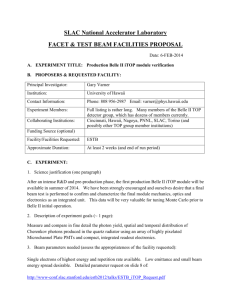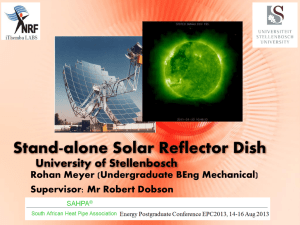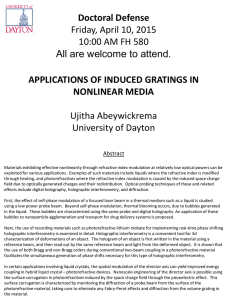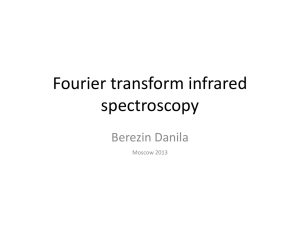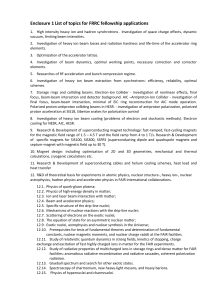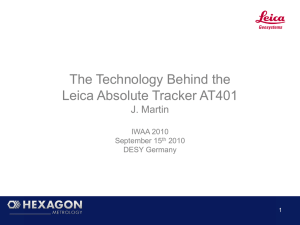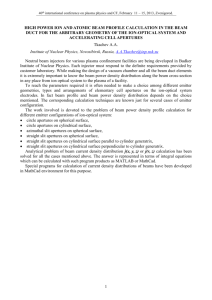A Novel Beam Mapping Measurement - Olin
advertisement
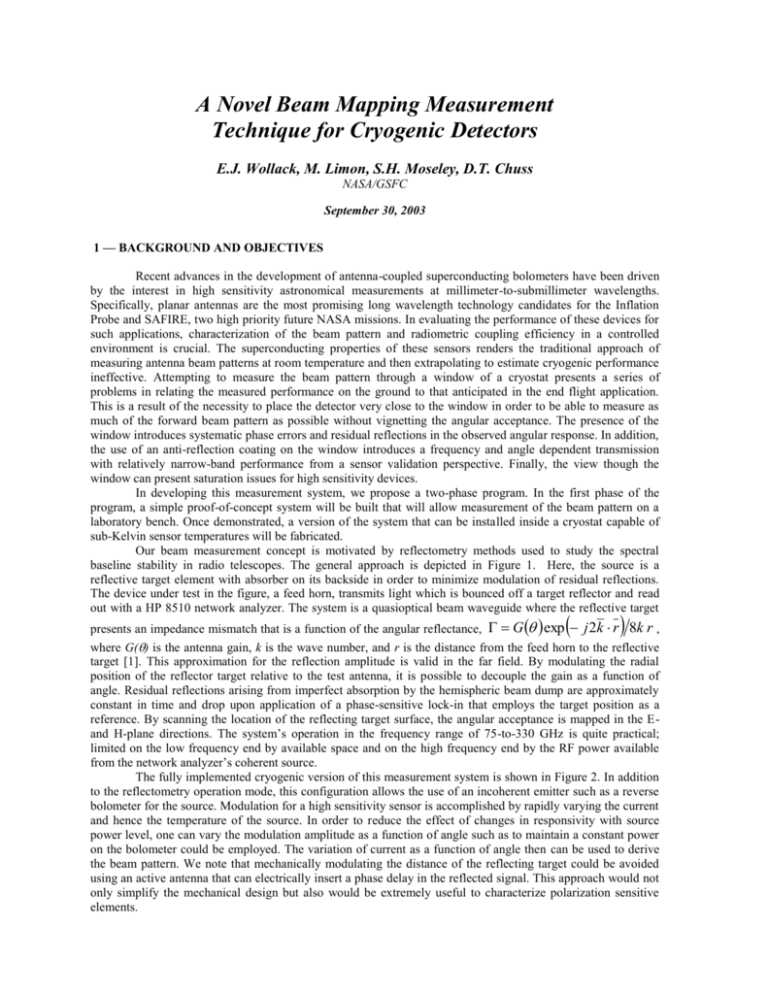
A Novel Beam Mapping Measurement Technique for Cryogenic Detectors E.J. Wollack, M. Limon, S.H. Moseley, D.T. Chuss NASA/GSFC September 30, 2003 1 — BACKGROUND AND OBJECTIVES Recent advances in the development of antenna-coupled superconducting bolometers have been driven by the interest in high sensitivity astronomical measurements at millimeter-to-submillimeter wavelengths. Specifically, planar antennas are the most promising long wavelength technology candidates for the Inflation Probe and SAFIRE, two high priority future NASA missions. In evaluating the performance of these devices for such applications, characterization of the beam pattern and radiometric coupling efficiency in a controlled environment is crucial. The superconducting properties of these sensors renders the traditional approach of measuring antenna beam patterns at room temperature and then extrapolating to estimate cryogenic performance ineffective. Attempting to measure the beam pattern through a window of a cryostat presents a series of problems in relating the measured performance on the ground to that anticipated in the end flight application. This is a result of the necessity to place the detector very close to the window in order to be able to measure as much of the forward beam pattern as possible without vignetting the angular acceptance. The presence of the window introduces systematic phase errors and residual reflections in the observed angular response. In addition, the use of an anti-reflection coating on the window introduces a frequency and angle dependent transmission with relatively narrow-band performance from a sensor validation perspective. Finally, the view though the window can present saturation issues for high sensitivity devices. In developing this measurement system, we propose a two-phase program. In the first phase of the program, a simple proof-of-concept system will be built that will allow measurement of the beam pattern on a laboratory bench. Once demonstrated, a version of the system that can be installed inside a cryostat capable of sub-Kelvin sensor temperatures will be fabricated. Our beam measurement concept is motivated by reflectometry methods used to study the spectral baseline stability in radio telescopes. The general approach is depicted in Figure 1. Here, the source is a reflective target element with absorber on its backside in order to minimize modulation of residual reflections. The device under test in the figure, a feed horn, transmits light which is bounced off a target reflector and read out with a HP 8510 network analyzer. The system is a quasioptical beam waveguide where the reflective target presents an impedance mismatch that is a function of the angular reflectance, G exp j 2k r 8k r , where G() is the antenna gain, k is the wave number, and r is the distance from the feed horn to the reflective target [1]. This approximation for the reflection amplitude is valid in the far field. By modulating the radial position of the reflector target relative to the test antenna, it is possible to decouple the gain as a function of angle. Residual reflections arising from imperfect absorption by the hemispheric beam dump are approximately constant in time and drop upon application of a phase-sensitive lock-in that employs the target position as a reference. By scanning the location of the reflecting target surface, the angular acceptance is mapped in the Eand H-plane directions. The system’s operation in the frequency range of 75-to-330 GHz is quite practical; limited on the low frequency end by available space and on the high frequency end by the RF power available from the network analyzer’s coherent source. The fully implemented cryogenic version of this measurement system is shown in Figure 2. In addition to the reflectometry operation mode, this configuration allows the use of an incoherent emitter such as a reverse bolometer for the source. Modulation for a high sensitivity sensor is accomplished by rapidly varying the current and hence the temperature of the source. In order to reduce the effect of changes in responsivity with source power level, one can vary the modulation amplitude as a function of angle such as to maintain a constant power on the bolometer could be employed. The variation of current as a function of angle then can be used to derive the beam pattern. We note that mechanically modulating the distance of the reflecting target could be avoided using an active antenna that can electrically insert a phase delay in the reflected signal. This approach would not only simplify the mechanical design but also would be extremely useful to characterize polarization sensitive elements. 2 — RESEARCH AND DEVELOPMENT PLAN: Month from Project Start: Design Warm Prototype Warm Prototype Fabrication Warm Prototype Testing Cold System Design Cold System Fabrication Cold System Testing 1 *** 2 *** 3 4 5 *** *** *** *** *** *** 6 7 8 *** *** *** *** *** *** *** 9 10 11 12 *** *** *** *** *** REFERENCES: [1] Silver, Samuel, Microwave Antenna Theory and Design, 1986, Peter Peregrinus Ltd., London, UK, Section 5.10, pp. 155—158. Figure 1: Beam Pattern Determination by Millimeter Wave Reflectometry: The beam measurement configuration is amendable to study at room temperature. The target reflector’s position is modulated with small amplitude in the direction of the source in order to decouple the effect of the reflector from imperfections in the absorbers. The reflective element is scanned along the detector’s E- and H-planes at an approximately constant distance. This configuration can be used to study waveguide-coupled versions of the antennas used for millimeter wave detectors. By varying the target size the return signal and mapping resolution can be varied. Figure 2: Beam Pattern Determination with an Incoherent Source and Cryogenic Sensor: For a high sensitivity sensor, a thermal emitter is used as the source. The hemisphere is cooled to a temperature representative of the background loading the detector would see in an astronomical application. The filter is mechanically coupled to the emitter to avoid the effects of oblique incidence. The source is modulated with a modest change in current (i.e., source temperature). As the source is moved in the E- and H-planes at a constant distance from the detector, the source amplitude modulation is varied in order to maintain constant power on the detector as a function of scan angle. This approach minimizes the effect of responsivity variations that are a function of detector loading. 2



